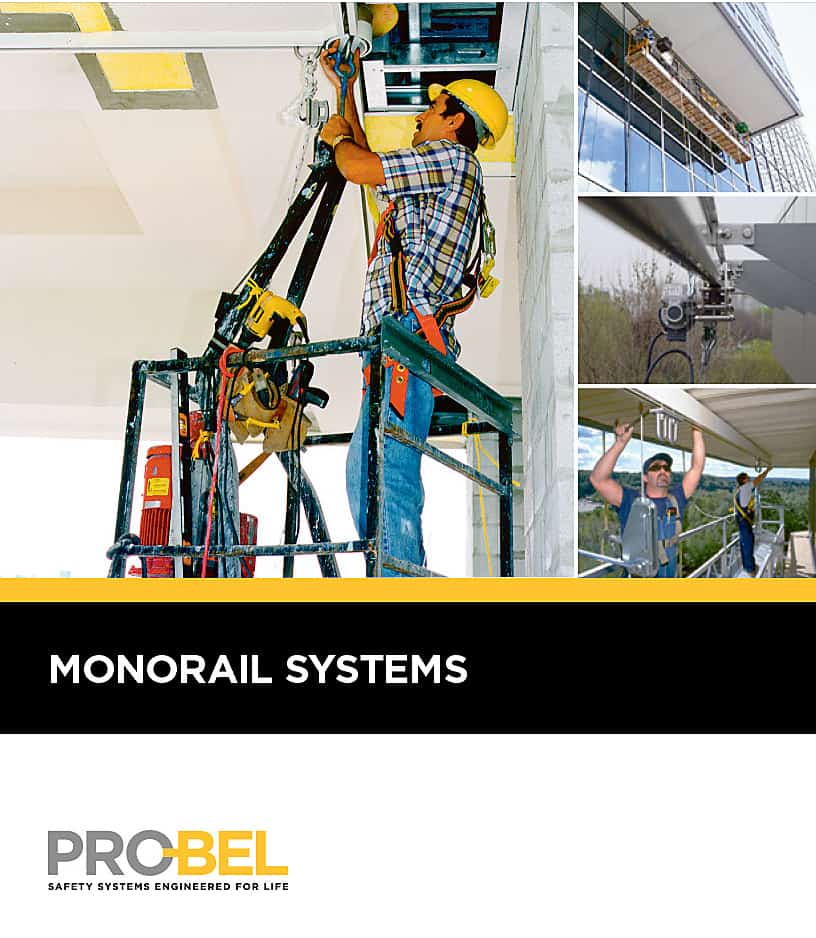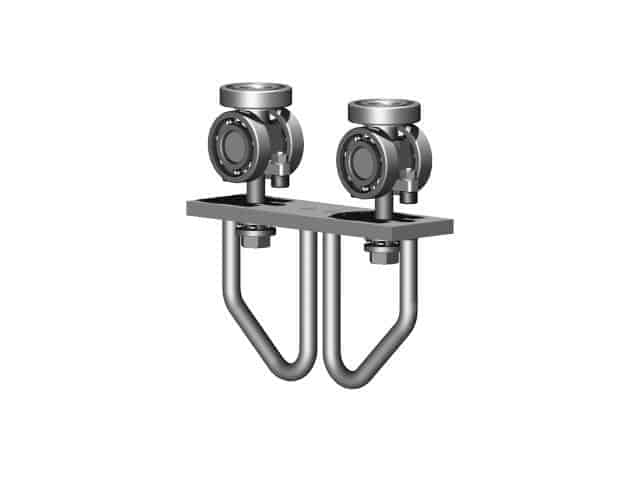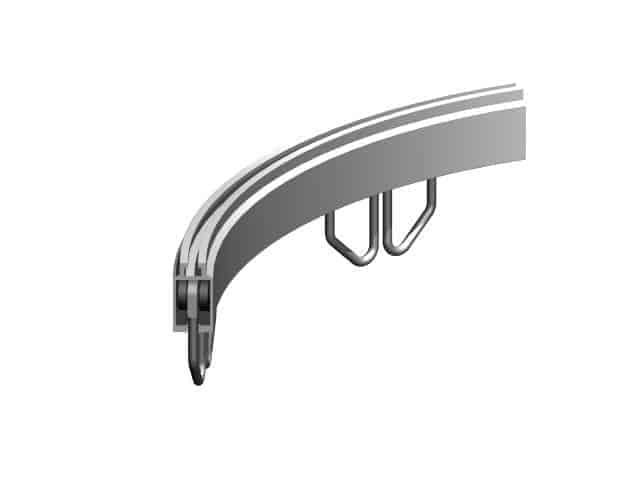Monorail Fall Protection Systems

Monorail Fall Protection Systems for Worker Safety
A suspended access monorail fall protection system is permanent window washing equipment for facade cleaning in difficult-to-reach spots, such as under overhangs or lobbies, where installing rooftop equipment is impractical.
For buildings with hard-to-reach or otherwise inaccessible exterior or interior glass, Pro-Bel recommends installing a custom-made monorail system. Monorail systems are typically used with powered platforms, although they also accommodate single work cages and bosun chairs.
Rails, which can be straight or radiused, may be left exposed or concealed in soffit or ceiling spaces. Whatever the application, the platform is "slid" along the monorail.
Typically, workers access monorails via a localized window, hatch, rigging sleeve, or ladder. They then suspend their lines from the monorail and return to the first floor or lower level to ground rig their platform. One of the most overlooked aspects by design professionals is the provision for localized access and fall protection, enabling workers to approach monorails safely.
Complete this form to download your free brochure
These systems provide a secure anchorage point that allows workers to move freely along a horizontal track/monorail safety rail while remaining safely attached, preventing falls in hazardous environments.
Why Use Monorail Fall Protection Systems?
Monorail fall protection systems offer a reliable solution for the underside of building overhangs, sloped glazing/sky lighting, all types of atrium glass, domes, and similar applications wherever continuous horizontal movement is required and workers are exposed to fall hazards.
These systems are typically installed where a traditional fall protection setup, like safety nets or standard guardrails, isn't feasible.
This system can also be set up to be used as fall protection equipment rather than for window washing. Monorail fall protection systems are custom-designed to ensure workers can access hard-to-reach areas safely, whether performing facade maintenance on tall buildings, working on sloped rooftops, or repairing large equipment.
Industries such as airplane maintenance facilities, public transport facilities, and factories manufacturing large-scale products or equipment rely on monorail systems to safeguard workers who must navigate hazardous drop distances. For example, when maintenance personnel must perform tasks on top of a commercial airplane or inspect equipment in high-risk industrial facilities, a monorail system offers them the flexibility and security required to do their jobs safely.
How Monorail Fall Protection Systems Work
A monorail fall protection system utilizes a secure overhead track from which workers can attach their fall arrest gear, such as a lifeline or a lanyard. The monorail trolley moves along the track, allowing workers to traverse the length of the system while remaining tethered, providing continuous protection from falls throughout their work.
Monorail systems can be custom-configured with straight or curved rails, depending on the architectural or structural needs of the building or facility. The rails may be concealed within ceilings or left exposed, providing flexibility in design without compromising safety.
Types of Trolleys for Monorail Systems
Monorail fall protection systems include various types of trolleys that workers use to move safely along the rail:
- Manual monorails: Workers push or pull themselves along the track.
- Motorized monorails: Automatically traverse the rail for easier movement.
- Battery-operated monorails: Provide powered movement without requiring a fixed electrical connection.
- Ceiling moutned monorails: Designed to move along horizontal, vertical, or inclined monorails, ideal for complex architectural environments.
Curved monorails
Curved monorails are available with a 90o or 45o bend or circle configuration and require a 3-0" (915 mm) minimum radius. Typically, workers access monorails via a localized window, hatch, rigging sleeve, or ladder. They then suspend their lines from the monorail and return to the first floor or lower level to ground rig their platform. One of the most overlooked items by design professionals is the provision for localized access to the monorail and fall protection for workers while en route.
Pro-Bel supplies the following curved monorail products:
Explore monorail products
Ceiling Monorail trolleys
Climbing monorail trolleys are designed to traverse along horizontal, inclined, or vertical monorails, even those with twists or curves. They are used to suspend a platform, a single work cage, or a bosun's chair. Climbing monorail trolleys are ideal for sloped interior atria, while external applications include curved and sloped building facades.
Window Washing Gantry Systems
A gantry system is a permanent platform on a monorail hoist that can work over glass when all other conventional means of performing maintenance cannot be used. This window washing system is fully customized to meet the building’s architecture.
Alternatives to monorails
If a monorail can’t be adequately implemented for either window washing or facade maintenance, there are a few alternatives, including but not limited to:
- Rigging sleeves are often used as a substitute for monorails, where the only option for locating suspension lines or lifelines is through a wall, floor, or roof.
- Portable hook ladder systems are an efficient, simple alternative to either monorail or gantry systems in many cases.
Components in a monorail hoist system
The system typically includes:
- Trolley
- Monorail support hanger
- Primary cable
- Lifeline
- Overhead track
- End support
Custom Solutions for Monorail Fall Protection
At Pro-Bel, we understand that every building and facility is unique. That's why we offer custom-designed monorail fall protection systems tailored to meet your structure's specific safety needs. Whether your building has curved facades, sloped surfaces, or hard-to-reach areas, we can design a system that provides maximum fall protection without compromising functionality or aesthetics.



